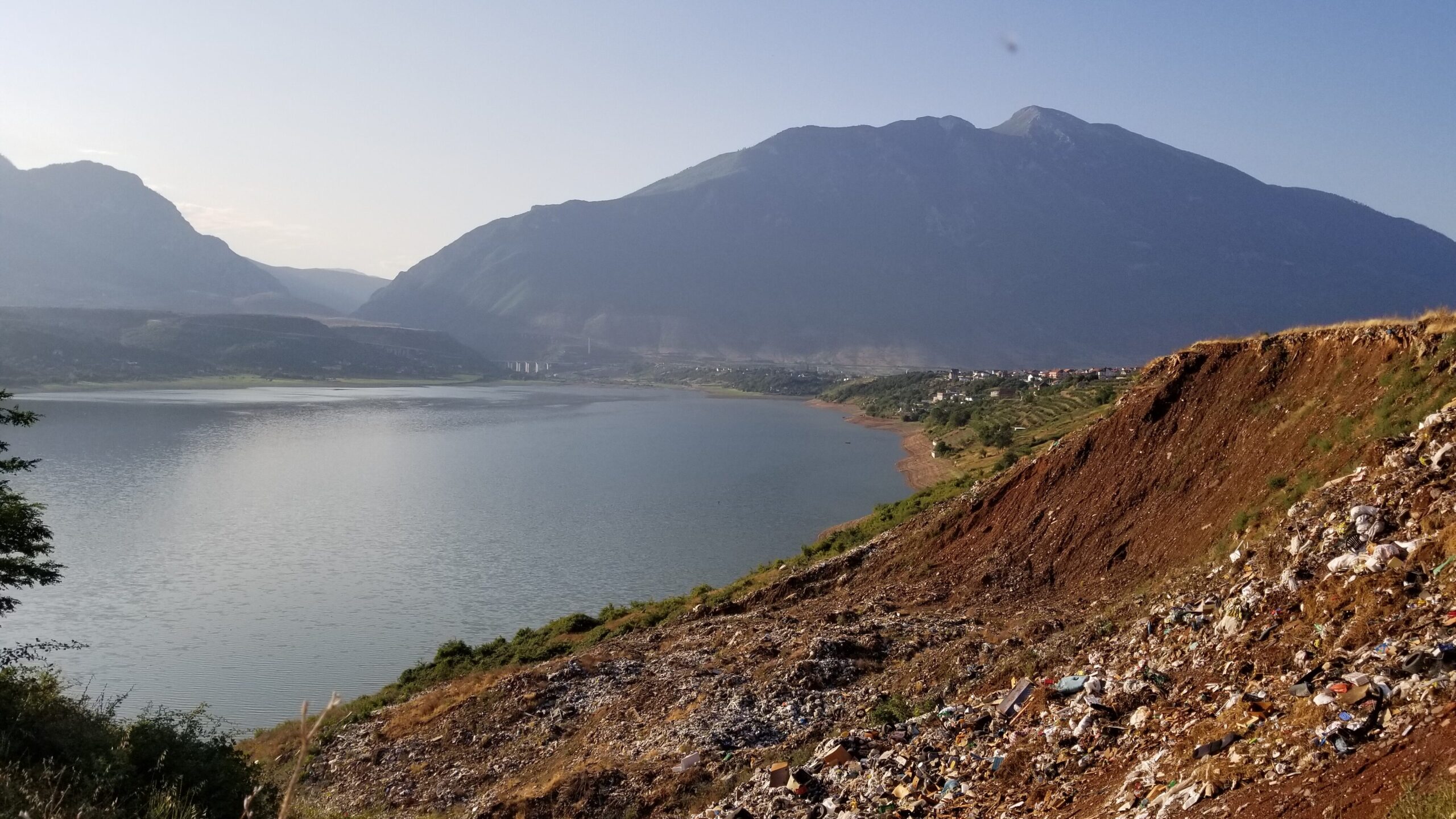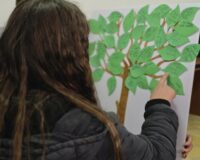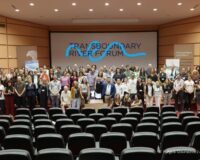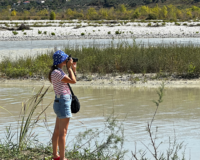In the early days of the morning, near the dump of urban stories in the story of Mom, Where a man enters through open entrances, as he discovers they are spread everywhere. The landfill, positioned a few meters from Lake Fierza, is only on the side of the road with a concrete wall, while the rest is surrounded, which means that it is free to be open.
“I’m not responsible for what might happen to you,” he tells me in an aggressive tone, as I photograph the remains that follow the short journey to the lake of Fierza.
Lake Fierza in Kukës was formed in the year around 1980, as a result of the construction of the hydropower plant on the Drin river.
Lumi Drin rrjedh në pjesën veriore të Shqipërisë dhe formohet nga bashkimi me Drinin e Zi që buron nga Republika e Maqedonisë së Veriut dhe Drinin e Bardhë që buron nga Kosova. Të dyja këto dezime, së bashku me rrjedhën ujore, sjellin çdo vit në Shqipëri të gjithë dhe bizneseve që janë fshehur në Maqedoninë e Veriut dhe Kosovë.
In the absence of a solution for waste management but also of awareness, many citizens inside and outside the borders of Albania, use the river as a “mobile waste collection point”.
“I live in the city of Kukes, in the city, in district three, which is one of the districts that partially overlooks Lake Fieri. A very beautiful sight, but it’s also sad…”, says Roberta Dida, as she explains that negative emotions are created in front of the sight she can see every day; other pictures splashing on the water in every month of the year.
Dida is quite disappointed by the management of waste by the Municipality of Kukës, but also by the way in which the common in the community is conceived.
“People have been throwing garbage constantly in different environments, in streams, in simple words, wherever they have found free space, except in their own homes.”
“I’m sorry because they don’t understand that in fact, the environment that surrounds us wherever we step is also their own enemy”, concludes Roberta Dida.
Arben Palushi, director of the Department of Environment in the Municipality of Kukës, also affirms the bad institutional management.
“We are showing that we do not have a good distribution of jobs. We are convinced day by day that the municipal service in the administrative units and municipalities is not good”, says Palushi.

Zero investments from the Municipality of Kukes for story management
Arben Palushi confesses that every early spring, together with five employees, he physically goes out to the field every day to settle on the Kukës peninsula, which is 472 hectares of land. Find them then take them to Mom’s landfill.
These shares are insufficient to cope with the high level of pollution, which in budgetary terms is a completely unrepresented problem: zero money.
Law 139/2015 “On Local Self-Government”, in Article 23, states that it is the duty of Municipalities to manage, remove and treat solid and household waste.
On the other hand, the document published in Strong Municipalities informs that the Municipality of Kukes during the years 2018-2019 has allocated zero lek for waste management, while according to the National Environment Agency itself, in 2018 the district of Kukes, which includes the Municipality of Kukës itself, Hasi and Tropoja has produced 18,178 tons of waste.
Palushi shows that the cleaning actions, apart from being insufficient, are a double-edged sword, as it seems as if the finger for the high level of pollution is pointed at the citizens, while he directs the blame towards institutions and businesses.
“You can’t always blame the weakest”, he continues, referring to the citizens.
In total, in the city of Kukes, according to data published on the website of the Municipality of Kukes, there are 100 containers for 22,614 inhabitants. These remains, however, have a short journey; they end up in the landfill of Manez, and then in the lake of Fierza.
Environmental expert Gjergj Selfo explains that the municipalities’ approach to waste management remains superficial and does not aim to get to the heart of the problem.
“Every 2-3 years, a new waste management plan is made for all municipalities, but they are not implemented”, says Selfo.
“All these policies are aimed at removing that bag from people’s eyes, they are not aimed at the real treatment of the waste, the preservation of the ecosystem”, he continues, as he claims that there are only three genuine landfills in Albania.
Mining activities are another factor in the pollution of Lake Fierza and Drini as a whole.
The districts of Kukës and Dibra have a high activity of exploitation of the mining sector and quarries. Mining is still the main economic sector in the Kukes and Dibra regions, focused on anhydride (anhydrous calcium sulfate, CaSO4) mining on the right side of the Black Drin in the Dibra region and on iron-nickel, chrome and copper mining around the lake of Fierza in the Kukes region.
The main plants that have caused environmental pollution are chrome, copper mines and quarries in Çabrat, Rrogam 1, 2, 3, Çorraj, Lajthizë, Kam, Kepenek, Zogaj 1, 2, 3, Skatine, Shpati i Vishë, Vlah, Pëlajlaj , Qafëprushi, Prroi i Batra, Kalimash 1, 2, 3 and copper mines in Gjegjan, Gdheshte, Shëmri/Leproi, Golaj, Nikolic, Krumë/Kullaj, Goskolli.

Cross-border projects for restoration, a lot of money, little investment
Since 2009, Albania has started dialogue with the Republic of North Macedonia and Montenegro to solve the pollution situation in the Drin River, which flows to the Adriatic Sea. “Drin Dialogue” was a project funded by the Swedish Environmental Protection Agency and aims to start of a cross-border agreement to regulate the situation. Since 2009, Albania has started dialogue with the Republic of North Macedonia and Montenegro to resolve the pollution situation in the Drin River, which flows to the Adriatic Sea. “Drin Dialogue” was a project funded by the Swedish Environmental Protection Agency and aims to start of a cross-border agreement to regulate the situation.
This project lasted until November 2011 and was accompanied by continuous institutional meetings by representatives of countries such as Albania, Montenegro and North Macedonia, where a long-term strategy for the management of the Drin basin was elaborated.
In 2011, the Memorandum of Understanding for the Management of the Drin Basin was signed in Tirana at the cross-border level by Albania, North Macedonia, Greece, Kosovo and Montenegro.
The objectives of this memorandum were to minimize pollution, improve access to data, minimize flooding and minimize damage from hydro-morphological changes. This project was funded by the Global Environment Facility (GEF), implemented by the United Nations Development Program and executed by the Global Water Partnership (GWP).
In 2015, a multi-million dollar project was funded to protect the resources of the Drin basin. “Global Water Partnership Mediterranean” , UNDP and UNECE funded two projects worth 5.5 million dollars for the cooperation of the states living along the Drin River.
In 2019, another project worth $9,927,750 was approved for flood management in the Drin River Basin in Albania, the Republic of North Macedonia and Montenegro, which will implemented until 2024 entirely by UNDP.
Representatives from the institutions for the preservation of the environment in Kosovo claimed that they have completed the construction of two plants for the treatment of waste water in Drini e Bardhë, in Prizren and in Rahovec.
“From the Global Water Partnership – Med Project within the framework of the memorandum of cooperation for transboundary waters, a plant/lagoon for the treatment of polluted water has been built in the municipality of Rahovec”, says hydrologist Fidan Bilalli from the Ministry of Environment. , Spatial Planning and Infrastructure.
“Plants are being built for the treatment of polluted water in the Drini i Bardhë river basin, as in the municipality of Peja, Gjakovë”, continues Bilalli.
Promises to build other wastewater treatment plants are not unheard of phrases from environmental activists in Kosovo.
“For years they only talk and make ‘plans’, agreements and whatnot other than work on the ground, it is never done“, says Luan Hasanaj from the organization “Let’s do it – Clean it up” Kosovo”.
Environmental activists criticize the policies undertaken so far for the restoration of the White Drin.
“Until now, no serious measures have been taken to reduce pollution, there are still no concrete plans for the construction of sewage plants, nor any concrete project that would prevent the dumping of waste” , – says Hasanaj. clear
Drini joins Buna, an “Albanian Amazon” full of waste
After a long cross-border journey, Drini meets Buna, which comes out of Lake Shkodra and is 44 km long. Biology Aurora Pirovic considers it the Albanian amazon, but its beauty is also marred by all-round pollution.
“As for the threatening activities, the first is the sewage discharges from Shkodër Municipality”, says Pirović, as he explains that another damaging element of the Buna River is the agricultural activity of the residents, especially of the Dajç administrative unit, a unit that extends along the river.
“So, on both sides of Buna, in agricultural lands, pesticides or other chemicals are used in the agricultural sector”, – she affirms as she says that waste management, just like in Kukës district, leaves a lot to be desired.
“Starting from Zuesi to Pulaj, in these villages most of the waste is poured through drainage or irrigation canals, since there are agricultural lands all around, both to the left and to the right of the river”, – quotes Aurora Pirovic.
Contributing to the pollution of the Buna River, in addition to the Drin, is the Kir River, which flows from Dukagjini and Përroi i Thaë from Malësia e Madhe, which are used by the residents as “containers”, and which in the rainy season end up in Buna, and then in Adriatic.
Throwing away is a small evidence that is another unwanted.
“By adding silt to the river basin, the possibility of the river level rising is much faster and the probability of flooding in those surrounding areas increases. This also causes erosion of the Buna coast, ruining the agricultural lands of the surrounding villages”, – explains Aurora Pirovic.
Another problem related to the waters of the Buna River is overfishing with currents and the massive use of nets, which have led to the disappearance of the characteristic fish of the Buna River, such as carp, blin fish or whitefish.
Rivers, I often talk to older people, remember them with nostalgia. Once they were clean, spacious and brought good and prosperity to the community. Today, a few years after the change of the system, they have turned into preferred “waste dumps” due to their convenience, both for governments and communities.
Now the rivers no longer bring prosperity, but garbage, plastic, sewage that constantly remind you how little has been done to preserve the primary source of life: the river!
By Entenela Ndrevataj







